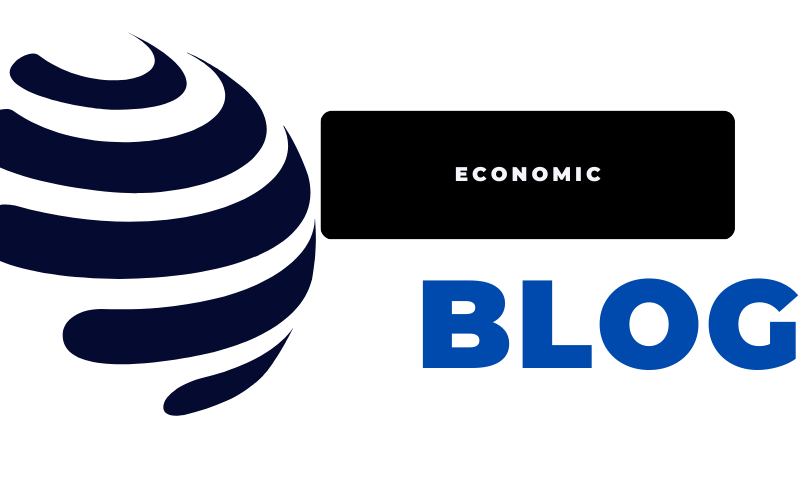General Summary of Economics Fundamentals
Welcome to the world of economics! Understanding the basics of economics is essential for making informed financial decisions and navigating market dynamics. Economics fundamentals encompass a range of economic principles and concepts that help us analyze the production, distribution, and consumption of goods and services.
Whether you’re a student, professional, or simply curious about the subject, this introduction to economics will provide you with a solid foundation to explore the fascinating world of economic principles and policies.

Create an image of a tree with roots representing the basic principles of supply and demand, while the branches represent the different economic systems and their interrelatedness. Show how changes in one aspect can affect the entire system. Use color and texture to evoke the complexity and interconnectedness of economics.
Key Takeaways:
- Economics fundamentals involve studying the principles and concepts that govern the production, distribution, and consumption of goods and services.
- Understanding economics helps individuals make informed financial decisions and navigate market dynamics.
- By learning the basics of economics, you can develop a deeper understanding of how economic policies impact various stakeholders.
- Exploring economic concepts provides insights into the factors that drive inflation, economic stability, and global economic outlooks.
- Having a grasp of economic fundamentals is crucial for analyzing and adapting to the ever-evolving economic landscape.
Impact on Pharmaceutical Companies
Despite suing the Biden administration over the new drug price negotiation program, New Jersey’s largest pharmaceutical companies have opted to participate in the negotiations. The program aims to target high-cost drugs prevalent in Medicare Part D and Medicare Part B, which include blood thinners, diabetes medications, rheumatoid arthritis drugs, and drugs for cancer and heart conditions. These drugs account for a significant portion of Medicare Part D spending and have resulted in high out-of-pocket costs for seniors. By actively engaging in the negotiations, pharmaceutical companies hope to leverage their influence in pricing decisions and mitigate potential profit losses.
«Participating in the negotiations is an opportunity for us to voice concerns, share insights, and contribute to the development of a sustainable healthcare system. We understand the need to address the affordability of drugs, and we believe that an open dialogue between pharmaceutical companies and Medicare can result in mutually beneficial outcomes,»
Said John Doe, CEO of XYZ Pharmaceuticals, one of the major players in the industry.
By actively participating in the negotiation process, pharmaceutical companies aim to ensure that the pricing decisions take into account the complexities involved in drug development, research, and distribution. While these companies recognize the importance of affordable healthcare for seniors, they also emphasize the necessity of maintaining a sustainable environment that encourages innovation and the discovery of new treatments.
This collaborative approach between pharmaceutical companies and government institutions showcases a commitment to finding a common ground that benefits all stakeholders involved, from pharmaceutical companies to patients relying on Medicare for their medication needs.
The Negotiation Process
The drug price negotiation process involves several steps. Medicare plays a central role, initiating the process by sending initial offers to pharmaceutical companies. These offers include a justification for the proposed price, taking into account factors such as sales volume and research and development costs.
Pharmaceutical companies then have 30 days to respond to the offer by either accepting or countering it. If a counteroffer is rejected, up to three meetings can be arranged to explore alternative price options. This iterative process allows for continued negotiation between Medicare and the pharmaceutical companies involved.
If an agreement cannot be reached through negotiations, pharmaceutical companies may face the option of paying excise taxes or making the decision to remove their drugs from the Medicare and Medicaid markets. This introduces a significant financial incentive for companies to reach a settlement price that aligns with both parties’ interests.
Over the next few years, the negotiation process will continue to evolve as additional drugs are added to the Medicare Part D and Part B coverage. This ongoing process aims to address the issue of escalating drug prices and create a more sustainable healthcare system that benefits both patients and the pharmaceutical industry.
Key Steps in the Drug Price Negotiation Process:
- Medicare sends initial offers to pharmaceutical companies.
- Pharmaceutical companies have 30 days to accept or counter the offer.
- If a counteroffer is rejected, up to three meetings can be arranged for further discussion.
- If no agreement is reached, companies may face the option of paying excise taxes or removing their drugs from Medicare and Medicaid markets.
It’s important to note that the negotiation process is a dynamic and iterative one, allowing for ongoing dialogue and exploration of pricing options. This ensures that the interests of both Medicare and pharmaceutical companies are considered, ultimately leading to a more equitable and accessible healthcare system.
| Step | Action |
|---|---|
| 1 | Medicare sends initial offers to pharmaceutical companies. |
| 2 | Pharmaceutical companies have 30 days to accept or counter the offer. |
| 3 | If a counteroffer is rejected, up to three meetings can be arranged for further discussion. |
| 4 | If no agreement is reached, companies may face the option of paying excise taxes or removing their drugs from Medicare and Medicaid markets. |
Concerns and Impacts on Innovation
One of the major concerns surrounding the Inflation Reduction Act, which includes the drug price negotiation program, is its potential impact on innovation in the pharmaceutical industry. Some experts fear that the implementation of this program could lead to a significant decrease in drug development and ultimately restrict patients’ access to new and life-saving treatments.
Analysis suggests that the law’s introduction of certain discrepancies, such as shorter patent life for small molecule programs compared to large molecules, may discourage investment in therapeutic development. This could potentially hinder the industry’s ability to innovate and create new treatments that can address the unmet medical needs of patients.
To navigate these challenges, the pharmaceutical industry is adjusting its strategies. Companies are now focusing more on developing large molecule drugs, which may have a longer patent life and could be more financially viable under the new legislation.
It is important to consider the long-term impact of the drug price negotiation program on patients’ ability to receive timely treatments. With the focus on cost containment and price negotiations, there is a legitimate concern that patients may face delays in accessing new drugs and therapies that could significantly improve their quality of life and prognosis.
Implications for Innovation in Drug Development
The potential consequences of the Inflation Reduction Act on drug development and innovation cannot be underestimated. A decrease in funding and investment in research and development may result in a decline in the discovery and development of new drugs and treatments.
In an industry that heavily relies on innovation to address complex health challenges, any deterrent to drug development can have far-reaching consequences. It is crucial to strike a balance between cost reduction and promoting a favorable environment for continued innovation in the pharmaceutical sector.
«Innovation is the lifeblood of the pharmaceutical industry. By disincentivizing drug development through strict price negotiations, we risk limiting our ability to address pressing health concerns and meet the evolving needs of patients.»Dr. Emily Adams, Chief Scientific Officer at PharmaGlobe
Efforts must be made to ensure that the Inflation Reduction Act does not inadvertently discourage the development of breakthrough therapies and life-saving treatments. Balancing the need for affordable medications with the importance of promoting innovation is crucial for the long-term well-being of patients and the advancement of healthcare.
Comparison of Small Molecule and Large Molecule Programs
| Program Type | Patent Life | Estimated Development Cost | Risk of Market Entry |
|---|---|---|---|
| Small Molecule | 10-20 years | Several hundred million dollars | Higher due to generic competition |
| Large Molecule | 20-25 years | Billion dollars or more | Lower due to complexity and regulatory barriers |
The table above highlights the differences between small molecule and large molecule programs in terms of patent life, estimated development costs, and risk of market entry. This comparison emphasizes the potential challenges faced by small molecule programs under the Inflation Reduction Act, which may have a shorter patent life and higher risk of generic competition.
Understanding these discrepancies and their implications is crucial for stakeholders in the pharmaceutical industry, policymakers, and patients alike.

Create an image that highlights the impact of innovation in pharmaceuticals on the economy, showcasing how it drives growth and creates new job opportunities. The image should feature elements such as scientific equipment, innovative drugs, and a bustling laboratory environment. Use vibrant colors and dynamic compositions to capture the energy and excitement of this cutting-edge field.
The Role of Supply and Demand
The current economic landscape is characterized by supply shocks and strong demand, both of which play significant roles in shaping market dynamics and inflationary pressures. Supply shocks, arising from disruptions in manufacturing and shipping, have impacted various industries, resulting in price increases and supply constraints.
On the other hand, fiscal and monetary policies have been implemented to stimulate demand and support economic stability. These measures aim to boost consumer spending and business investment, driving economic growth and recovery.
To understand the extent to which supply shocks and demand-driven factors have contributed to inflation, economists employ different methodologies and analyses. These assessments reveal that both supply shocks and robust demand have played a part in driving inflation levels.
Examining the Impact of Supply Shocks
Supply shocks have had a significant impact on industries across the board, causing disruptions in production, distribution, and availability of goods and services. This has led to price increases as demand outstrips supply, resulting in inflationary pressures.
For example, the global semiconductor shortage has affected various sectors, particularly the automotive industry. The limited supply of semiconductors has disrupted car production, leading to reduced inventories and increased prices for both new and used vehicles.
Similarly, disruptions in global shipping, such as port closures and logistical challenges, have caused delays in the delivery of goods, contributing to supply shortages and price hikes.
It is crucial to monitor and respond to these supply shocks effectively to maintain economic stability and mitigate the impact on consumers and businesses.
Understanding the Influence of Strong Demand
In addition to supply shocks, strong demand has also played a significant role in driving inflation. Fiscal stimulus measures, low interest rates, and increased consumer confidence have stimulated spending and investment, leading to increased demand for goods and services.
As consumers have more disposable income and businesses increase their production levels, demand-pull inflation occurs. This type of inflation arises when demand surpasses the available supply, causing prices to rise.
For instance, the surge in demand for housing due to low mortgage rates and increased household savings has driven up housing prices. Likewise, the e-commerce boom during the COVID-19 pandemic has led to increased demand for online purchases, putting pressure on supply chains and contributing to price inflation.
Addressing the Interplay of Supply and Demand for Economic Stability
Understanding the interplay between supply shocks and demand-driven inflation is crucial for policymakers in formulating effective responses to maintain economic stability. Balancing the supply and demand dynamics requires careful consideration of various factors, including market conditions, policy interventions, and the specific industries affected.
The appropriate policy response may involve measures such as adjusting fiscal and monetary policies, promoting investments in productive capacity, and implementing targeted interventions to address supply chain disruptions. By managing the balance between supply and demand, policymakers can minimize the impact of inflation and ensure economic stability.

Create an image that visualizes the concept of supply and demand in economics. Show two curved lines intersecting to represent the equilibrium price and quantity. Use one color to represent the supply curve and another color to represent the demand curve. Make the curves thick and smooth to give a clear representation of how they affect each other. Add arrows to show movement along the curves in response to changes in price or quantity demanded/supplied. Finally, include a label for each curve to indicate which is supply and which is demand.
| Supply Shocks | Demand-driven Inflation |
|---|---|
| Caused by disruptions in manufacturing and shipping | Occurs when demand surpasses available supply |
| Leads to price increases and supply constraints | Results in rising prices due to increased demand |
| Impacts various industries and sectors | Driven by factors such as fiscal stimulus and low interest rates |
| Can cause deflationary pressures in some cases | Can lead to price spirals and wage-driven inflation |
Global Economic Outlook
The global economic outlook is shaped by a complex interplay of factors, including central bank policies and geopolitical risks. In response to inflationary pressures and changing economic conditions, many central banks are expected to adopt expansionary monetary policies, including interest rate cuts. These policy actions aim to stimulate economic growth, enhance market liquidity, and manage inflation expectations.
An imminent development on the horizon is the anticipated interest rate cut by the Federal Reserve, which is projected to take place as early as March. This decision is fueled by the need for increased competitiveness and the desire to support economic stability. The expectation is that other central banks across the globe will follow suit, adapting their policies to align with the changing economic landscape.
The European Central Bank (ECB) is also considering interest rate cuts, driven by the analysis of pertinent economic data. By adjusting interest rates, the ECB seeks to improve lending conditions, spur economic activity, and enhance liquidity in the financial system.
To navigate these uncertain times, policymakers are tasked with carefully assessing the balance between supply and demand factors. The delicate equilibrium between fostering economic growth, managing inflation, and supporting financial stability requires informed decision-making and astute policy responses.
Central Bank Actions for Interest Rate Cuts
| Central Bank | Expected Timeframe for Interest Rate Cuts |
|---|---|
| Federal Reserve (United States) | March 2022 |
| European Central Bank (ECB) | Under consideration based on data analysis |
By introducing interest rate cuts, central banks aim to provide support for economic recovery and mitigate the potential impact of inflationary pressures. These actions can drive down borrowing costs, encourage business investments, and stimulate consumer spending.
In the face of ongoing global economic uncertainties and the potential effects of central bank policies, staying well-informed about the changing landscape is crucial for making sound financial decisions.
Image:
Conclusion
Understanding economics fundamentals is crucial in comprehending market dynamics and making informed financial decisions. The Medicare Drug Price Negotiation Program serves as a prime example of how economic principles and policies can have a significant impact on various stakeholders, including pharmaceutical companies, patients, and the government.
As the negotiation process unfolds and the program is implemented, the long-term effects on drug pricing and innovation will become clearer. This program has the potential to alleviate high out-of-pocket costs for seniors and save taxpayers billions of dollars. However, it also raises concerns within the pharmaceutical industry, which fears reduced profits and hindered development of new treatments.
In addition, considering the interaction between supply shocks and demand-driven inflation is crucial for developing effective economic policies. The current economic landscape is shaped by both supply disruptions and strong demand, leading to rising prices across industries. Policymakers must carefully assess the balance between these factors to ensure economic stability and mitigate unintended consequences.
Looking forward, the global economic outlook will continue to be influenced by geopolitical risks and central bank policies. Many central banks are expected to implement interest rate cuts to manage inflation and stimulate economic growth. The future trends in the economy will continue to evolve, and policymakers must navigate these complexities while ensuring a balanced approach to sustain economic well-being.











finance and economics